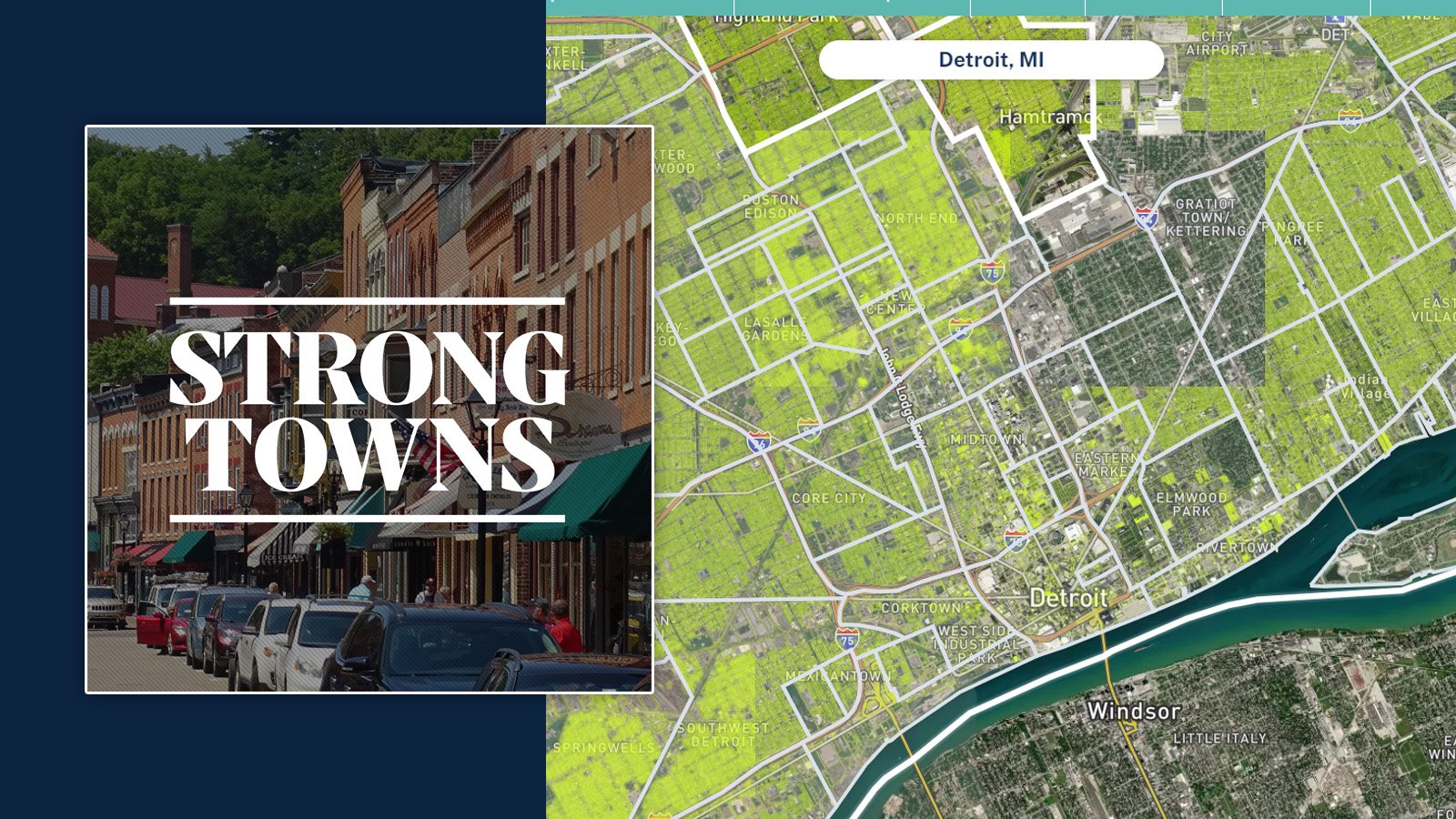Every City Should Do This Housing Exercise
Your city or town probably needs more housing. But where should it go?
The New-York-based Practice for Urbanism and Architecture took a proactive approach to addressing the city’s housing crisis, and shared the results in this interactive graphic for The New York Times.
The firm’s founder, Vishaan Chakrabarti, a former director of planning for Manhattan, touts the findings: “We found a way to add more than 500,000 homes — enough to house more than 1.3 million New Yorkers — without radically changing the character of the city’s neighborhoods or altering its historic districts.”
(Source: Practice for Architecture and Urbanism.)
One of the most compelling visuals is a standalone retail location in Brooklyn. The graphic shows how the footprint of the property could accommodate 58 new housing units in a midrise unit that matches the existing density of the area, all while retaining a ground-floor grocery store. The study also looks at adding housing near transit (as Philadelphia’s transit agency is looking to do on an existing parking lot), small-scale multi-unit buildings on infill residential lots, and office-to-residential conversion (which we’ve previously noted can be a challenge to execute). In each of these cases, the city and property owner would benefit from the existing urban infrastructure.
There are obvious limitations to this exercise—property rights and political will being top of the list—but there’s also a benefit to the blue-sky approach. If your city’s leaders can’t identify what results they’re seeking, how can they deliver them? It’s also a different question for a place that’s courting development versus one that may be facing growth pressure, but in either case having a proactive vision makes success more attainable.
This could be done by a municipal government or planning department, a private design or architecture firm, or even by a member of a Strong Towns Local Conversation eager to show housing alternatives to elected officials and business leaders.
The housing status quo is straining North American municipalities and citizens.
Chakrabarti points out the limitations of conventional policy approaches, “There are many reasons it is so difficult to build new housing in New York City — including zoning, the under-taxation of vacant and underutilized land, the continuing rise of construction costs, the elimination of important tax incentives, and intense and often misguided anti-development sentiments.”
New York mayor Eric Adams acknowledged the multi-faceted challenges of the crisis when he released his “City of Yes” housing plan last year. It emphasizes zoning reform, eliminating parking requirements, enabling ADUs and exactly the kind of mixed-use, residential-over-retail development envisioned in this new study.








Ben Abramson is a Staff Writer at Strong Towns. In his career as a travel journalist with The Washington Post and USA TODAY, Ben has visited many destinations that show how Americans were once world-class at building appealing, prosperous places at a human scale. He has also seen the worst of the suburban development pattern, and joined Strong Towns because of its unique way of framing the problems we can all see and intuit, and focusing on local, achievable solutions. A native of Washington, DC, Ben lives in Venice, Florida; summers in Atlantic Canada; and loves hiking, biking, kayaking, and beachcombing.